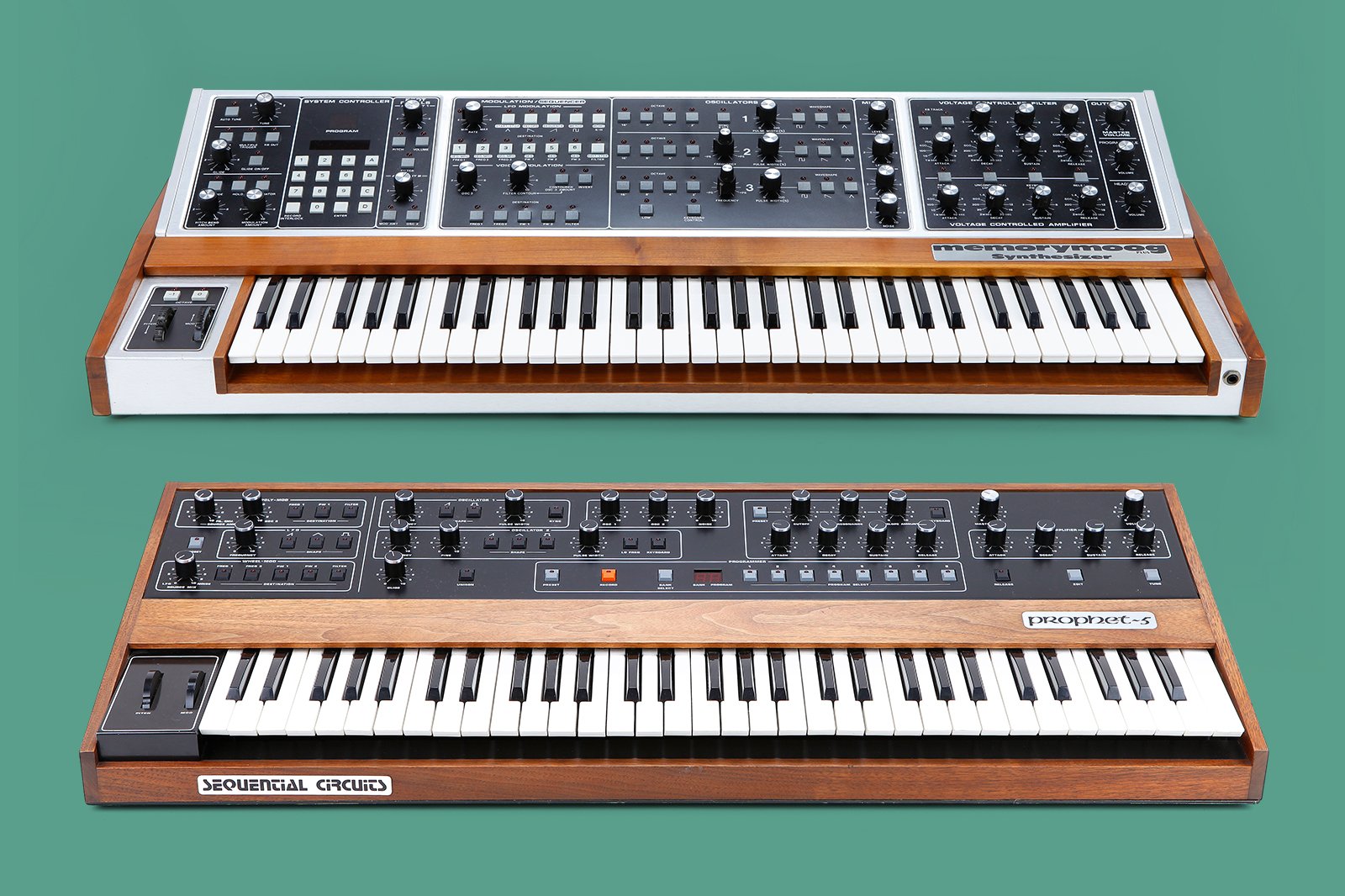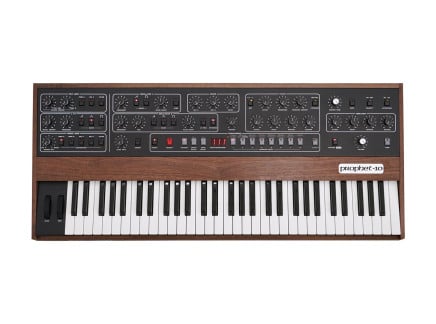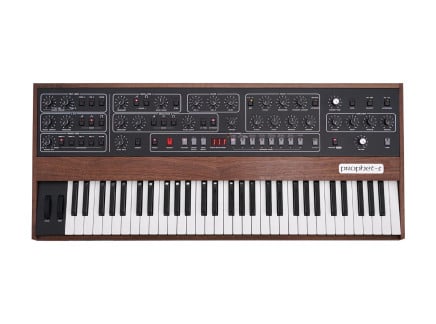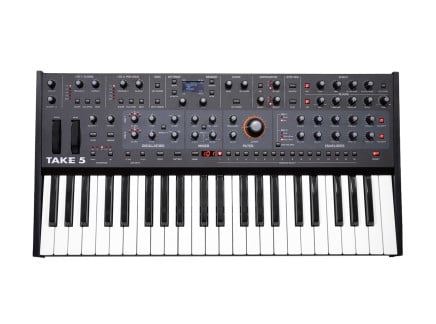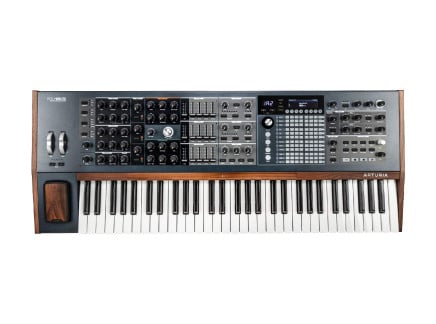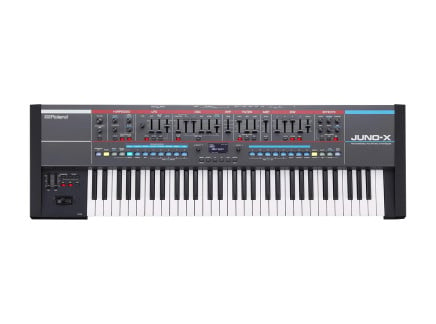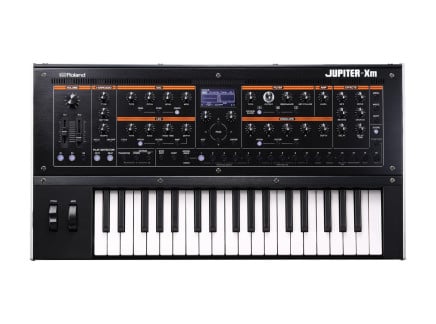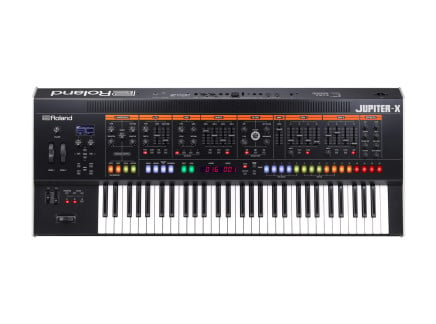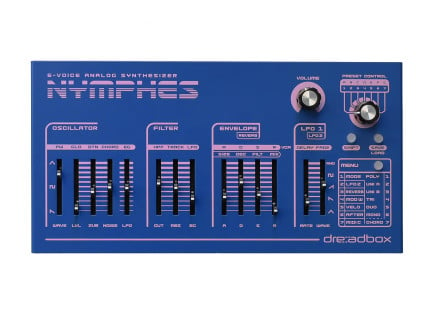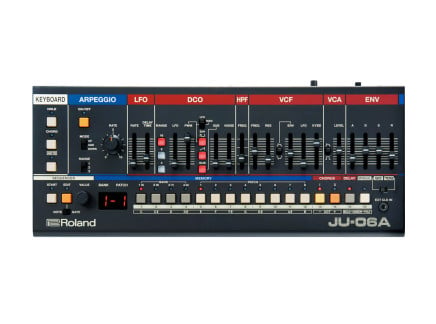For me, the allure of vintage analog polysnths can be boiled down into three factors: the simplicity of the sound engine, the quality and character of the sound, and of course, the nostalgia factor. The Prophet 5, Juno 106, Jupiter 8, Oberheim OB variations, PolyMoog, and Polysix, for example, all have an inherent simplicity, sound great, and all hold a place on the synth wall of fame. We know they sound great because they were used on our favourite tracks. Desirable? Yes...and in some cases, very yes!
As we all know, however, the prices of these instruments have risen exponentially in the past decade. Combine this with the ongoing challenges of maintaining a 40-year old piece of technology, and they become less attractive. I have owned many vintage synths, and still have a fair few lying around. Every one has needed repair or maintenance at some point. Finding a good synth tech locally is almost impossible and it’s becoming harder. Sometimes parts are difficult to source or they’re very expensive, and from a reliability perspective, every time I flick that power switch, I tense up waiting for the inevitable issue. Will it power up? Will it stay in tune? Will all the voices work? More often than I’d like, the answer is no.
Currently there are unfixable dead keys on my Alpha Juno 2, the Juno-6 volume pot crackles like a 1940s AM radio, the filter fader only has 70% travel, and the rest are clogged with ancient gunk. My Jupiter-6 has dead oscillators, and the lowest notes on my Polysix will only come into tune once it has warmed up for at least an hour. Technicians have been booked, replacement parts have been ordered, and my fingers are crossed that eventually it will all come together.
If you're daydreaming about a specific vintage synthesizer and wondering about potential modern-day counterparts and how they stack up, read on.
Sequential and Oberheim Classics Reborn
The most obvious of these are the Sequential Prophet-5/Prophet-10 and the Oberheim OB-X8. These are virtually clones of the originals with a few modern additions. Not only do these sound, look, and feel like the vintage units, but the original designers, Dave Smith and Tom Oberheim, were directly involved in their creation. This gives a level of credibility and reassurance that you’re buying into an authentic channeling of the vintage ethos—that is hard to match.
The first thing you notice about these synths is their physical presence. They are huge, imposing instruments taking centre stage in the studio. The space between the knobs is a luxury, and the 5-octave keybeds are like the keyboards of old, except not as clunky, they have aftertouch, and all the keys work!
From an interface and programming perspective, they stick very close to the originals. The Prophet-5/10 on is pretty much knob per function. The OB-X8 is a bit different, incorporating all of the design elements of the original OB-X, OB-Xa, and OB-8 in a single instrument. Happily, it also includes some new features, and retains the button combinations to access the hidden functions of the originals. On each, we even have a vintage mode to add some varying levels of drift to the circuits. Turn the vintage knob up and hear the envelope times change per voice and listen to the resonance on a single voice start to ring out, just like a vintage unit in need of a service.
They both also have options for the different revisions of the synth. The Prophet-5/10 has the Rev1/2 and Rev3 filter options. The Oberheim has the OBX and OBXa filters and different envelope curves for the various revisions. If it’s the nostalgic factor you’re after, they deliver in full. If it’s the legendary sound quality you’re looking for, they both sound sublime.
Sequential and Oberheim Classics Reimagined
Of course, there's more out there than direct re-creations of the original synths. Some other modern offerings take the essence of the originals and update them with a number of additional modern niceties...ultimately, turning into different synthesizers that carry much of the original ethos, but push it into new directions.
[Above: the modern Sequential Prophet 6 and OB-6.]
The Prophet 6 and OB-6 are more like modern reimagining of the concepts in their predecessors. With built-in effects, arpeggiator/sequencers and analog drive circuits, they both differ from the vintage Prophets and Oberheims while staying close to the original ethos.
The Prophet 6, for example, has a sub oscillator and blendable waveshapes, and the OB6 has a SEM-like state-variable filter. They’re both smaller than the originals, although it has to be said I’ve never considered either to be small, or the knobs to be too tightly packed. They each have only four-octave keybeds, but that’s been a positive in my experience. It’s a good compromise between cost, functionality and space. Of course, there are also desktop versions available if space is at a premium and you want to use a larger keyboard. These are a couple of quality synths that cross the boundary between the modern and vintage.
That’s not all the options offered by Sequential. If you really want that five-voice experience, I can highly recommend the Take 5. It’s got a much smaller footprint, but gives a lot of bang for the buck, including onboard reverb, overdrive and multi-FX units. As of the V2.0 firmware, it even adds loopable envelopes, you can bypass the filter with VCO2, and it has LFO slew controls. It only has 44 keys, but it’s a Fatar keybed with aftertouch, so although it doesn’t give that big polysynth experience, it feels and sounds like a quality instrument. It can take the sound well out of Prophet 5 territory, of course, but if you limit your use of certain aspects of its functionality, you can certainly dial in those vintage tones.
The Sequential Prophet Rev2 uses DCOs, like the Junos, and comes with a much more complex synth engine, including four LFOs, three envelopes and a huge modulation matrix. It lacks the oscillator cross-modulation capabilities of the VCO-based Prophets and Take 5—a common limitation of DCO synths—but it does offer audio rate modulation of the filters, so you can still get those metallic tones and FM style crunches.
It has a multi-slope low pass filter so, unlike the other Prophets, you can use a 12dB filter for more Oberheim-style tones, plus it comes with 8- or 16-voice options, and a desktop version. Again, this has a couple of effects units and digital control of everything. The integrated sequencer has four lanes of motion, bringing another level of complexity and flexibility while still retaining an all-analog signal path (up to the effects). If your budget only stretches to a used synth, then the Prophet 08 is also well worth a look. It’s the previous iteration of the Rev 2 and lacks effects or a sub, but brings the same tone.
Korg Polysynths Reborn: Minilogue XD
It might feel like Sequential have us covered from an analog polysynth perspective, but we’re only really touching the surface so far. Korg, for instance, have a long history here—with the Polysix, Poly61, and Poly800 paving their way through the 1980s.
[Above: the Korg Polysix, Poly61M, and Poly800.]
The Polysix was a Juno competitor with a single oscillator, LFO, and envelope, patch memory, and a built-in chorus. Without MIDI, it wasn’t as successful—but it has a beautiful smooth tone. The Poly61 and Poly800 made the typical '80s mistake of reducing the interface to button pushing, reducing costs and attempting to look more modern, but they did retain the gorgeous tone on the Polysix. Bargains are still to be had on the used market, but if you want the sound in a modern package, take a look at the Minilogue XD and the Prologue. These are often overlooked because of a few peculiar design choices, like limited envelopes, but they sound wonderful.
The Minilogue XD in particular is an unbelievable bargain when looked at from a functionality and sound quality perspective. It has two VCOs plus a super flexible digital oscillator, high quality and interesting onboard effects, plus a sequencer with lanes of motion. You can even load user effects and oscillators; there’s plenty of free and paid third party options available, which adds to the flexibility and fun. Overall, the VCOs combined with the filter have a wonderful rich texture. Value for money-wise, it has to be top of the list. Yes, it’s got minikeys, but that sound sells itself.
Visions of a Past that Never Existed: Arturia Polybrute
Arturia’s Polybrute doesn’t have the direct connections to the past the others here do. Aruturia is, after all, a newbie when compared to Sequential, Korg and Oberheim, but the company has learned an awful lot since it released its first minimoog VST emulation in 1999. Arturia has gradually built up their analog synth hardware capabilities, starting with the Minibrute, Microbrute, and Matrixbrute, and now culminating in the Polybrute.
Polybrute features two VCOs per voice, just like the Prophets and Oberheims, but it takes things much further with a sub oscillator plus Moog style 24dB ladder filter in addition to a 12db Steiner-Parker filter that can be configured in parallel, series or anywhere in between. With three loopable envelopes, three LFOs with single shot mode, a wavefolder, and the ability to continuously morph between two distinct patches, it’s simply a sound designers dream.
The modulation matrix takes everything to another level, enabling modulation of the modulators, and a simple-to-use interface that makes the most of the 8x12 grid on the front panel. It has a unique arpeggiator, and the addition of the Morphee 3D touch surface and Ribbon controller also make this a great performance synth. If you’d prefer to stick to more vintage concepts, just limit your sounds to a single filter, two envelopes and a single LFO. The vintage character is all there in the raw sound of the VCOs. This one comes with a free editor and has been given an all-black makeover in the Noir edition for those who aren’t keen on wooden dashboards.
Memories Re-Emerging: the Moog One
A review of analog polys wouldn’t be complete without the Moog One—with a design quite reminiscent of the legendary and quite costly Moog Memorymoog. While it has some things in common with the Memorymoog (a polyphonic architecture with three VCOs per voice and a latter filter per voice), the One takes this conceptual framework much further. In fact, it may be one of the most capable analog polysynths ever made.
[Above: a vintage Moog Memorymoog, followed by the modern Moog One.]
One is truly a true tour de force of synth design. If you can think of it, it’s probably got it. Coming in eight or glorious 16-voice versions means that you 24 or 48 Moog VCOs and 8 or 16 Moog ladder filters (plus an additional state-variable filter for each voice). Unfortunately, that number of Moog filters and VCOs is never going to be a budget option.
As much as it might look like a Memorymoog, it’s not exactly a reimagining of any synth in particular, but rather an evolution of all that Moog has been perfecting over the past five decades. What’s not to love...except the remortgage of the house or selling a couple of limbs to afford one?
Modeling the Past: Roland
Finally, I have to say a word about Roland. The company has declared that it won’t revisit the past, and has put most of its efforts into the digital realm—giving us modeled emulations of the classics.
[Above: the vintage Roland Jupiter-8 followed by the modern Jupiter-X, and vintage Juno-106 followed by the modern Juno-X.]
The System-8 uses their ACB technology to provide super precise recreations of the Jupiter 4, Juno-106, Juno-60, Jupiter-8, and JX3P amongst others. Roland’s Zencore technology is in the Jupiter-X and Juno-X as well as the smaller Jupiter-Xm.
This gives us smaller range of vintage emulations, but the addition of all Zencore has to offer. Purportedly they’re not quite as precise as the ACB versions, but unless you’ve ever owned or used a Jupiter 8, for example, I doubt you’d be disappointed by the sound. They are digital, so if analog is definitely your preference, you’ll have to cross them off your list. There is, however, a lot to be said for swapping sound engines and trying different synths if you don’t have the space or funds to start a collection.
Vintage Sound in the Modern Age
Deciding what is best for you really depends on whether you’re after an exact replica, the vintage ethos with modern advantages, something with equally as good sound quality but more flexible, or even a digital workalike. Any of these options might work for you!
Whether we all agree that a newer synth can tonally replicate the exact character and nuances of an original vintage unit or not—or whether we even care—we can all agree that we now have the benefit of choice. We have more options than ever before, which can only be a good thing.

